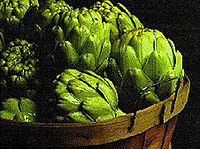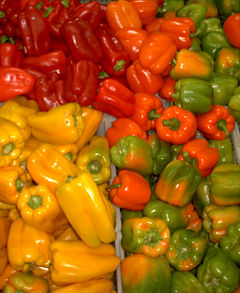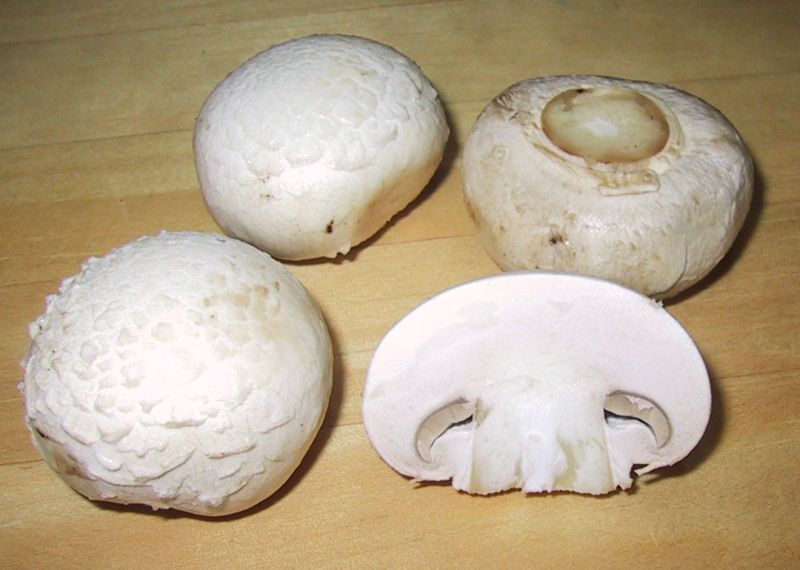The practice and art of cooking in the orient utilizes a variety of combinations, textures, flavors, colors and techniques. A large part of this style of cooking has to do with sauces and condiments that are used for cooking and at the table. What follows is a short list of the more common items:
Soy Sauce - Soy sauce originated in China around 3,000 years ago. Basic soy sauce is made by fermenting soy beans with water, salt, and specific types of molds. Sometimes other substances like wheat are added. There are many different varieties of soy sauce. Every country and region seems to have their own variation on the basic sauce. But all soy sauces are brown, salty, and earthy. They can be added to stir fries, soups, and can be used as a marinade. Soy sauce has been incorporated into more western types of recipes as an ingredient in barbecue sauces and other uses. Standard soy sauce is very salty, and contains over 900 milligrams of sodium per tablespoon. It can be a problem for those who need to restrict their sodium intake. There is a low sodium soy sauce that cuts the sodium per tablespoon by roughly 30%. Whatever type of soy sauce, use sparingly until you become more familiar with it as it can overwhelm a dish if overused.
Sweet and Sour Sauce - A mainstay of Cantonese cooking. It can be used to cook with or for a dipping sauce. As with soy sauce, there are many different versions of this sauce but the basic sauce is made with vinegar and honey or sugar. This sauce can be bought ready made in most grocery stores,
but it is quite easy to make at home.
Hoisin Sauce - This is a dipping sauce and is also used as Chinese barbecue sauce. It has a very salty and sweet flavor. It can be used in stir-fry recipes as a thickener as well as for its flavor.
Plum Sauce - A thick sauce similar to Hoisin and used in the same ways. It is tangy, sweet and spicy and is often made with vinegar, sugar, chili peppers and plums. Some Plum Sauces have a slightly smoky flavor to them.
Oyster Flavored Sauce - The original of this sauce was made by cooking down oysters and adding salt to the mixture. The modern version is made with oyster extract, caramel for color and thickened with corn starch. It is very thick, salty and savory, a perfect sauce for adding to beef or pork. If used with chicken it can overwhelm the chicken flavor. A dollop added to a stir-fry can really add a lot of flavor to the dish.
Duck Sauce - A type of sweet and sour sauce usually made from apples, but can also be made from plums, apricots, or peaches. Salt, vinegar , chili peppers and ginger are also added. It is usually very thick and translucent with an orange color. This is used primarily for a dipping sauce and is very sweet, tart and fruity.
Rice Wine Vinegar - This is a vinegar made from rice wine. It can be clear or various shades of red and brown. It is not as acidic as Western vinegar and it has a slightly sweet taste, so when a recipe calls for rice wine vinegar, do not substitute regular vinegar. It is used as an ingredient in many of the sauces previously mentioned, as well as for cooking and for dipping.
Sesame Oil - Sesame oil is extracted from sesame seeds, and is used in South India as a cooking oil. In Chinese and other cuisines it is used as a flavoring agent. Regular sesame seed oil is amber in color and has a nutty flavor. Dark sesame seed oil is made from tasted sesame seeds and is darker and has a stronger flavor. All sesame oils have a robust flavor, so only a few drops can flavor a pot of soup or stir -fry. Use too much, and it can easily overwhelm the dish. Always add sesame oil towards the end of the cooking process. If it gets too hot and burns the flavor is ruined.
Sriracha Sauce - A chili sauce made from jalapenos, salt, sugar, garlic and vinegar. The original Sriracha sauce of Thailand is different than the more common Sriracha found in most markets in the United States. Also known as rooster sauce because of the rooster on the bottle, this sauce is known around the world and is made in the United States by immigrants from Thailand. this is without a doubt my favorite chili sauce of all. It is a tad bit sweeter and not as acidic as Tabasco, and goes good with eggs, stir-fry, almost anything. When cooking with Sriracha, some of the heat is lost but the flavor remains. It is great stir-fried with shrimp or chicken.



























